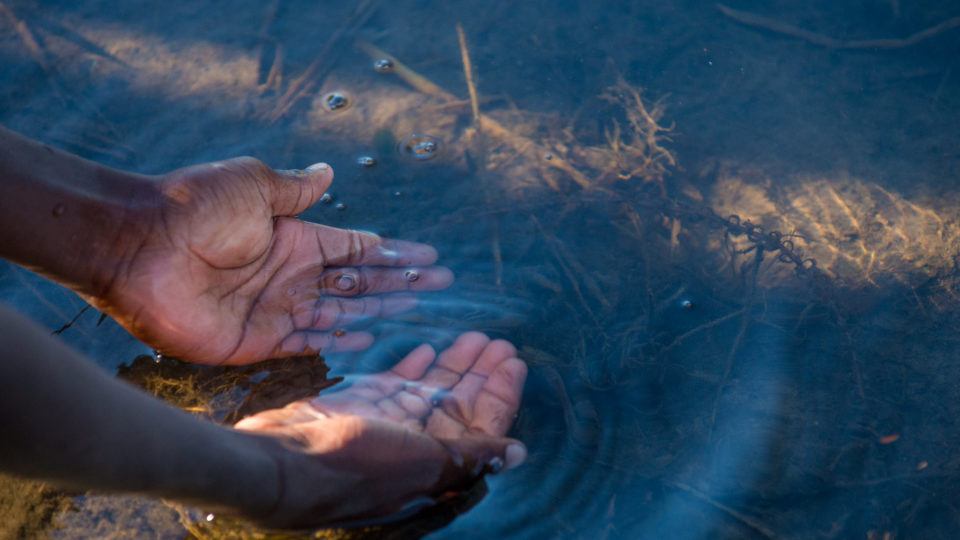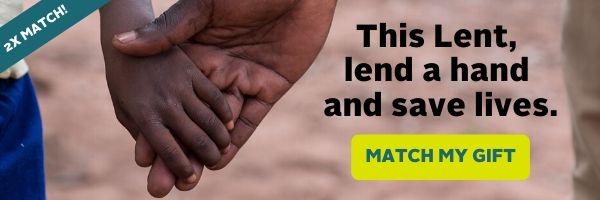Healing Waters – Your Weekly Reflection from CMMB

“He put clay on my eyes, and I washed, and now I can see.”
—John 9:15
Today on the 4th Sunday of Lent, the Gospel tells us how Jesus came across a blind man begging in the streets and gave him the gift of sight. Jesus rubbed the man’s eyes with clay then asked him to wash his face in water. So he went and washed, and came back able to see. (John 9:7) After the healing, each time the man met someone, he came to a deeper awareness of who Jesus was. In a similar way, we as Christians continue to grow in faith as our relationship with and knowledge of Jesus grows.
The symbol of water is used throughout the Bible to lead us to a deeper understanding of Jesus’ teachings. Today we commemorate World Water Day, an annual observance that highlights the importance of fresh water, now a crucial resource in preventing and containing the spread of coronavirus. CMMB Board Member and Associate Pastor of St. Ignatius Loyola Parish in N.Y., Father Michael Hilbert, expands on the meaning of water during the holy season of Lent.
 Lent is a journey to water, through water, and without water.
Lent is a journey to water, through water, and without water.
First, Lent is a journey to water. In Lent, we move toward the baptismal fountain of Easter night. Some of us move toward it for the first time, others for the first time as members of the Roman Catholic community. Most of us journey toward the water in a spirit of renewal. In many churches, all the holy water fonts are emptied and no baptisms are scheduled until the night when the waters of life flow once more for us. The Letter of Peter reminds us of this. This Lent, then, is our journey toward the water—a journey over parched, brittle, hard terrain.
Second, Lent is a journey through water. The Book of Genesis reminds us that water once destroyed the earth. There were only eight human survivors of that legendary catastrophe. They escaped death through the very water that was bringing death. Because they were in the ark for those 40 days, the water became for them their salvation. The ark is a very ancient image of the Church, of the people of faith. If we have faith, we have protection, a sure haven. If we have faith, what seems to destroy us is really what saves us. Death is the doorway to real life.
Third, Lent is a journey without water. The Gospel uses the image of the desert, the place without water, the place where Satan rules. We all spend time in the desert, in the flat, dry, quiet place where it is so easy to be twisted around and tempted by Satan.
Saint Ignatius Loyola called Satan “the enemy of our human nature.” Satan always wants us to think less of ourselves. He probably kept telling Jesus that he was just an uneducated little carpenter from a hick town on the edge of nowhere. Lucifer is a beautiful, cunning, genius. And he studies us like a military general studies a city to be attacked—finding the weak spots, the vulnerable spots, the hungry and thirsty spots.
No one escapes the desert, but we all carry the water in our hearts. Our baptism is our reservoir. In the dry time, we always have springtime. In our battles, we always have peace, or at least the hope of peace. In this long Lent we call human existence, we always have an Easter. And in death—may God help us to believe this—we have full, true life.
—Father Michael Hilbert
Let us remember to carry Jesus in our hearts to see us through our time “in the desert” as we confront the threat of coronavirus. May our faith grow and our hope remain constant. We may be forced to live in isolation, but we are never truly alone for he is always with us, ready to cleanse our souls from worry and make us whole.
In grace and peace,
CMMB/Healthier Lives Worldwide
*Parts of this article were inspired by Loyola Press Sunday Connection.
